The skin around the eyes is one of the most delicate and sensitive areas of the face. Over time, the natural aging process causes the skin to lose elasticity, leading to sagging. Blepharoplasty, or eyelid surgery, is a procedure designed to remove excess skin and fat from the eyelids, helping to restore balance and enhance the overall appearance of the eyes. So, what exactly is blepharoplasty? This article will provide you with detailed information about blepharoplasty and who is best suited for the procedure
What is blepharoplasty?
Blepharoplasty, or eyelid surgery, is a cosmetic procedure designed to enhance the appearance of the eyelid area. Specifically, the surgeon makes a small incision along the natural crease of the eyelid to remove accumulated fat and effectively address sagging skin.
This procedure helps correct drooping eyelids caused by aging and improves the overall aesthetic of the face. While generally considered safe, blepharoplasty still carries certain risks that may negatively impact eye health. Therefore, it’s essential to consult with a qualified specialist beforehand to determine the most suitable approach.
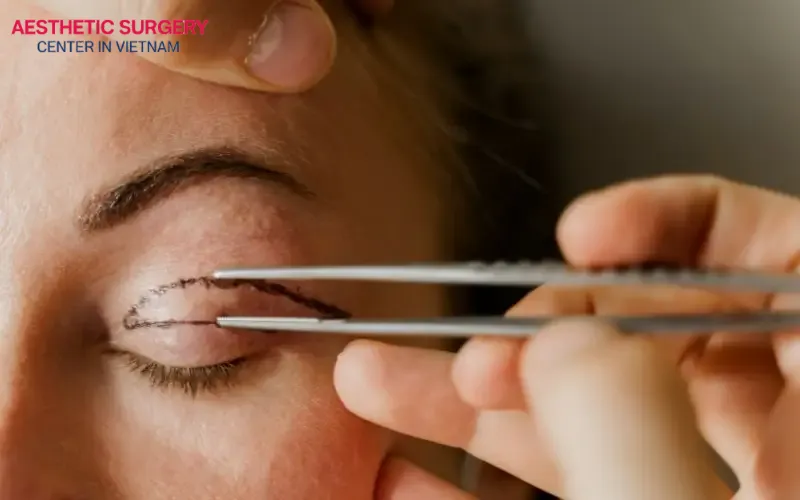
Why is blepharoplasty done?
Over time, the skin around the eyes is one of the first areas of the face to show visible signs of aging. Blepharoplasty not only addresses these aging signs but also helps the face appear more youthful and vibrant. So, what exactly is blepharoplasty, and why should you consider having it done? Below are two main reasons why blepharoplasty is worth considering:
Improves eyelid aging
As we age, the skin gradually loses its natural elasticity, causing the eyelid area, both upper and lower, to sag and accumulate excess skin. This can make the face look constantly tired, aged, and lacking vitality.
Blepharoplasty is an effective solution for removing this excess skin, enhancing the appearance of the eyes, and restoring a youthful look. For those with aging eyelids, this procedure not only improves aesthetics but can also enhance visual function by lifting drooping lids.
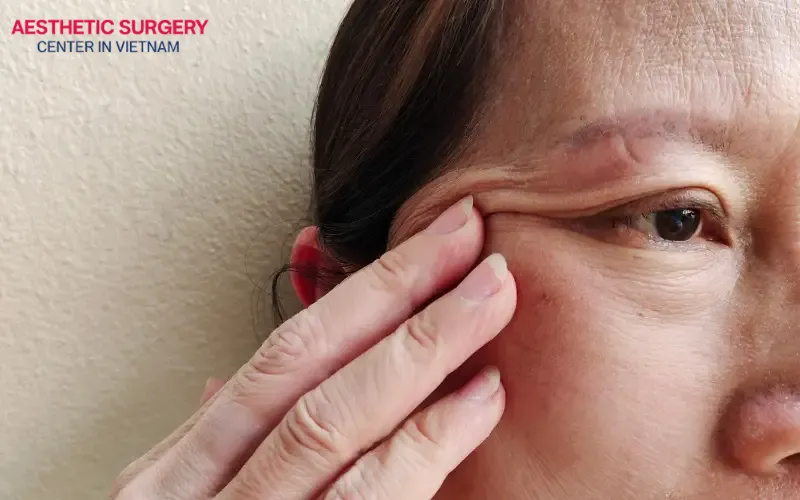
Improves vision
With age-related drooping eyelids, vision can become obstructed, negatively impacting visual quality. Blepharoplasty often involves removing excess skin and fatty tissue around the eyelids. In some cases, surgeons may choose to reposition rather than completely remove fat from the eyelid area.
Although primarily considered a cosmetic procedure, blepharoplasty can significantly improve the field of vision for individuals whose upper eyelids sag enough to impair sight. By removing the sagging skin that hangs over the eyes, the procedure clears the line of sight and effectively enhances visual clarity.
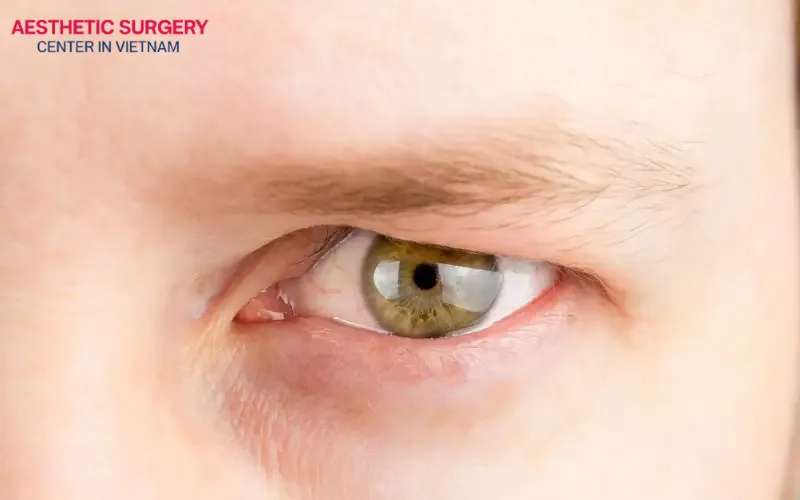
Who is a good candidate for blepharoplasty?
The most suitable candidates for blepharoplasty are typically individuals over the age of 30, in overall good health, and without underlying eye conditions. Below are some examples of people who may benefit from this procedure:
- Men and women aged 30 or older showing signs of aging around the eyes.
- Individuals with droopy, wrinkled eyelids that affect facial aesthetics.
- Individuals whose sagging eyelid skin obstructs their field of vision.
- Individuals with monolids who want a more defined eyelid crease.
- Individuals seeking to rejuvenate their eyes and achieve a more youthful appearance.
In addition to some suitable candidates for blepharoplasty, before undergoing the procedure, it’s essential to ensure you’re not experiencing any of the following health issues:
- Eye conditions such as glaucoma, dry eyes, or retinal detachment.
- Thyroid disorders, including Graves’ disease, hypothyroidism, or hyperthyroidism.
- Cardiovascular diseases, high blood pressure, or poor blood circulation.
- History of diabetes.
If none of these health conditions apply, you are likely a good candidate for blepharoplasty. This procedure can enhance your appearance, correct drooping eyelids, and give your face a refreshed, more youthful look.
However, it’s important to note that blepharoplasty does not change your facial structure. It specifically enhances the eyelid area. Therefore, consult with a qualified medical professional to determine the most appropriate cosmetic approach for your individual goals.
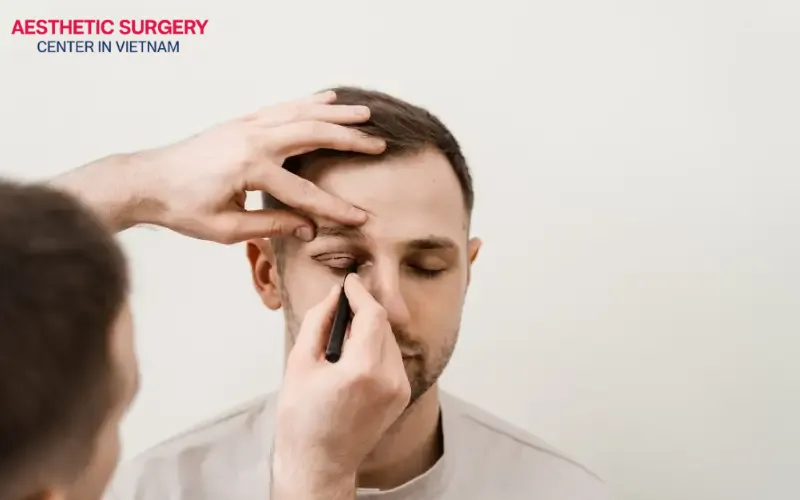
Types of blepharoplasty
Depending on one’s aesthetic goals, blepharoplasty can be performed on the upper eyelids, lower eyelids, or both for optimal results. So, what types of blepharoplasty are available? Below are two common procedures you may consider:
Upper blepharoplasty
During upper blepharoplasty, the surgeon makes a small incision along the natural crease of the upper eyelid. This location is carefully selected to ensure that the resulting scar is nearly invisible when the eyes are open. Through this incision, excess skin and sagging fat deposits are removed. The surgeon then uses fine sutures to close the incision, allowing for quick healing and a highly aesthetic result.
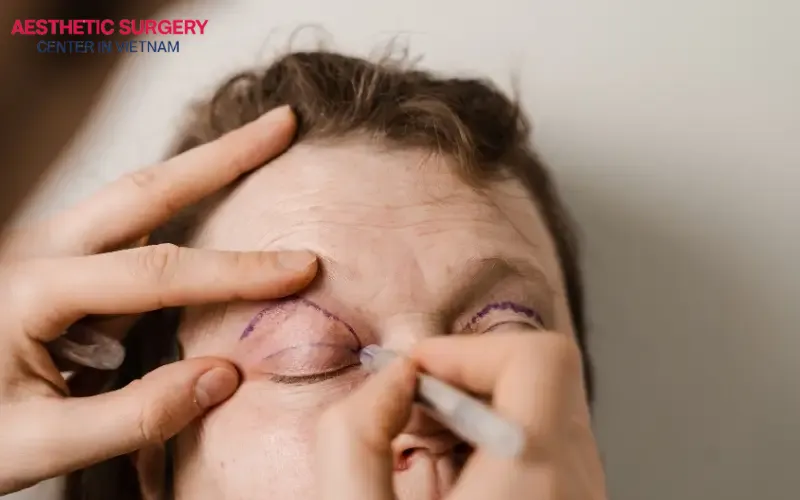
Lower blepharoplasty
In lower blepharoplasty, a small incision is made just below the lower lash line to maintain an aesthetic appearance after healing. Through this incision, the surgeon removes excess skin and corrects under-eye bags that contribute to a tired or aged look.
In some specific cases, a transconjunctival technique may be used, where the incision is made entirely on the inside of the lower eyelid. This approach allows for deeper manipulation of internal tissues without leaving any external scar. It enables the surgeon to skillfully remove or reposition fat deposits to smooth the under-eye area and significantly enhance facial appearance.
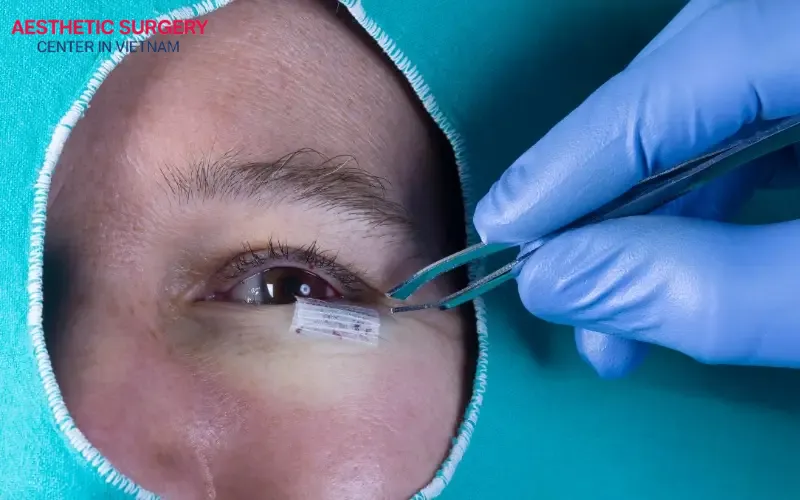
What you can expect blepharoplasty?
Once you have understood what blepharoplasty is and who the good candidates are, here are some important pre- and post-operative considerations you may not know about:
Before the procedure
Blepharoplasty is typically performed as an outpatient procedure, meaning you won’t need to stay overnight at the hospital. Before undergoing the operation, your doctor may advise you to take certain preparatory steps to ensure the surgery proceeds safely and smoothly. These steps may include:
- Quit smoking, as it can interfere with the healing process.
- Adjust current medications or start new ones as directed by your doctor.
- Temporarily stop certain medications, such as aspirin, anti-inflammatory drugs, blood thinners, multivitamins, or herbal supplements, since they may increase the risk of bleeding during surgery.
In addition, you should arrange for a trusted friend or family member to drive you home after the surgery and assist with post-operative care. This is considered one of the essential preparations before undergoing blepharoplasty.
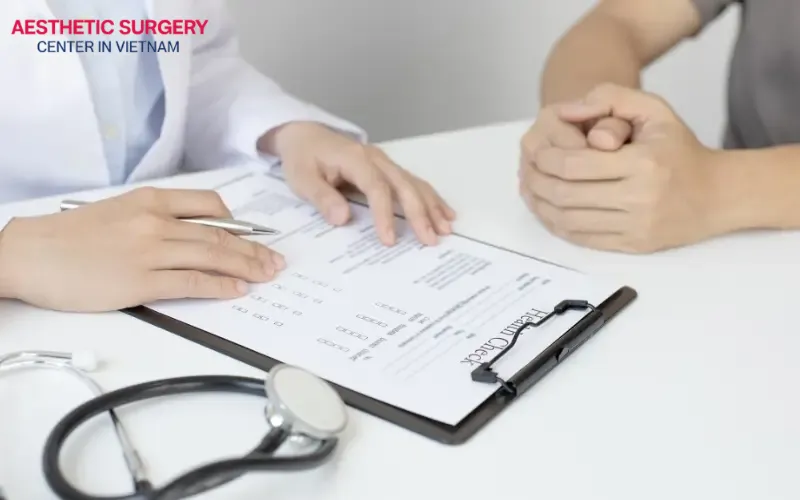
During the procedure
For the upper eyelids, the surgeon will make a small incision along the natural crease of the eyelid to ensure that the postoperative scar is barely noticeable. Through this incision, excess skin, muscle, and fatty tissue causing droopy eyelids will be carefully removed. Once completed, the incision will be closed with specialized sutures to ensure aesthetics and facilitate smooth healing.
For the lower eyelids, the surgeon may make an incision either just below the lower lash line or inside the eyelid, depending on each individual’s condition. Through this incision, accumulated fat will be removed, and any excess skin or lax muscles will be tightened to create a smoother under-eye area. Finally, the incision will be meticulously closed to maximize aesthetic results after recovery.
In cases where the upper eyelids are excessively droopy and obstruct the pupil, affecting vision, the surgeon may combine blepharoplasty with a levator muscle tightening procedure. This method not only removes excess skin but also improves eyelid opening, thereby significantly enhancing both appearance and visual function.
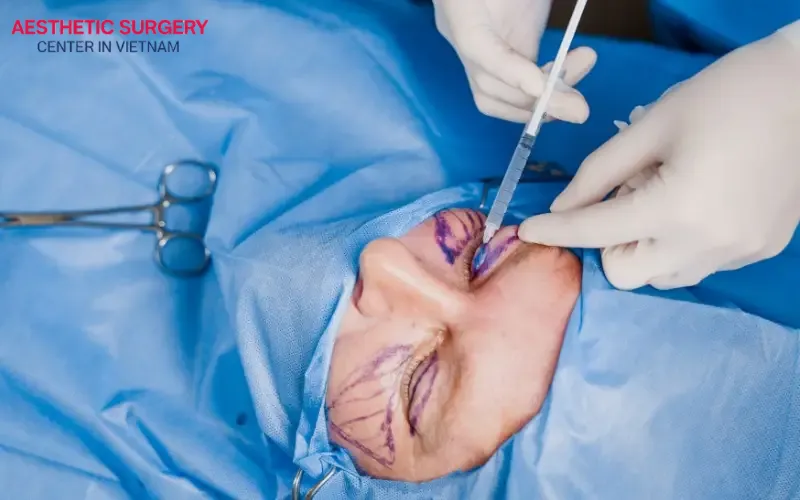
After the procedure
After the procedure, you will be taken to the recovery room where medical staff will monitor you to ensure no complications occur. If your condition is stable, you can go home the same day to continue your recovery process. Some common temporary symptoms after blepharoplasty that you should be aware of include:
- Blurred vision due to the lubricating ointment applied to your eyes.
- Excessive tearing.
- Sensitivity to light.
- Double vision (seeing one object as two).
- Swollen eyelids with mild numbness.
- Bruising and swelling resembling dark circles.
- Pain or discomfort.
To ensure a smooth recovery, it is essential to follow your doctor’s care instructions along with the guidelines below to accelerate wound healing.
Things you should do:
- Apply cold compresses to the eyelid area for 10 minutes every hour on the first day, and 4–5 times per day on the following day to reduce swelling and bruising.
- Clean your eyelid area properly as instructed by your doctor to prevent infection of the surgical wound.
- Use prescribed eye drops or ointment to keep the eyes moisturized, reduce the risk of infection, and support the healing process.
- Sleep with your head elevated above your chest for several days to reduce pressure around the eyes and promote better blood circulation.
- Place a cool towel over your eyelids to provide comfort and help reduce swelling and pain after blepharoplasty.
- Wear sunglasses when going outside to protect the eyelid area from UV rays, dust, and wind, minimizing the risk of hyperpigmentation and infection.
- Take acetaminophen-based pain relievers as prescribed to reduce pain without increasing the risk of bleeding, like other anti-inflammatory medications.
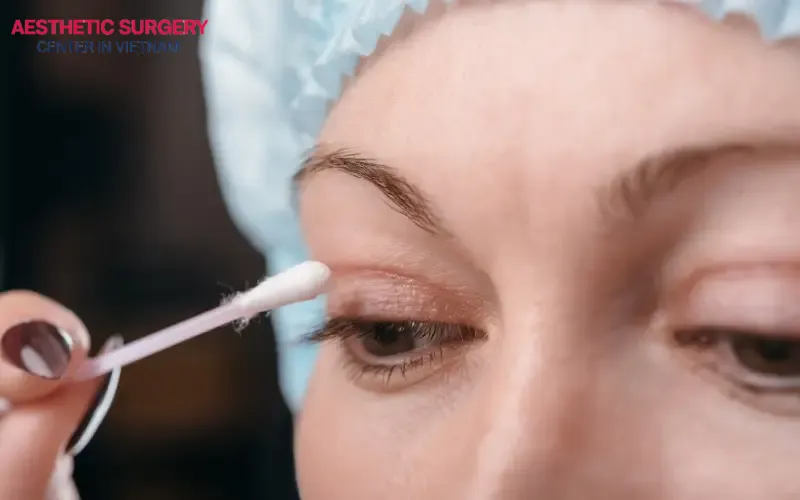
Things you should avoid:
- Avoid strenuous physical activities and heavy exercise for at least one week to prevent increased blood pressure, which can lead to bleeding or disruption of the stitches.
- Do not smoke to prevent delayed wound healing and reduced oxygen circulation to the recovering tissues.
- Refrain from rubbing your eyes or touching the eyelid area to minimize the risk of infection and avoid affecting the surgical sutures.
- Do not wear contact lenses for about two weeks to prevent irritation, reduce the risk of infection, and avoid hindering the healing process of the eyes.
- Avoid using aspirin, ibuprofen, naproxen, or herbal supplements after eyelid surgery, as these substances can thin the blood and increase the risk of postoperative bleeding.
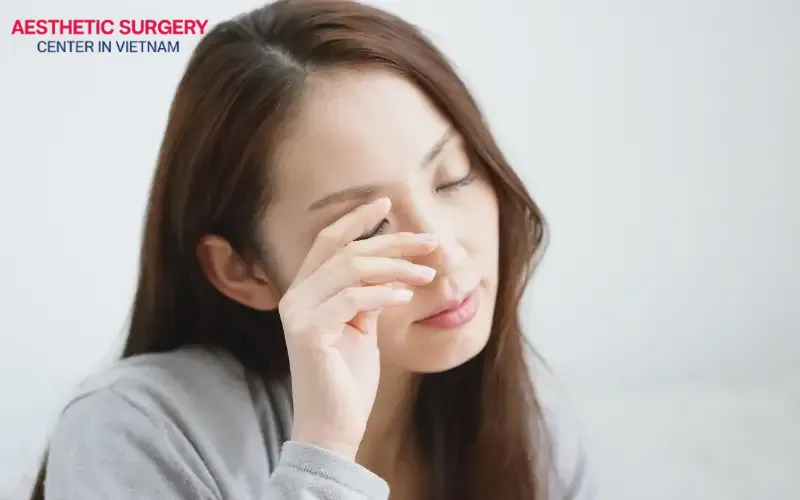
Aesthetic Surgery Center – Reputable eyelid surgery address in Vietnam
If you are looking for a reputable eyelid surgery address in Vietnam, Aesthetic Surgery Center is the ideal choice for you. At Aesthetic Surgery Center, you will experience a modern, spacious facility with internationally standardized sterile operating rooms to ensure absolute safety for every surgical procedure.
With a team of highly qualified doctors who have many years of experience in eyelid aesthetic surgery, clients are guaranteed a safe blepharoplasty procedure that adheres to strict medical standards, minimizing any unexpected risks.
Moreover, clients will experience eyelid surgery with advanced minimally invasive techniques. This is considered a modern blepharoplasty technology that helps reduce swelling and pain while shortening recovery time. Therefore, if you are seeking a reputable eyelid surgery address in Vietnam, Aesthetic Surgery Center is one of the most reliable destinations for you to consider.
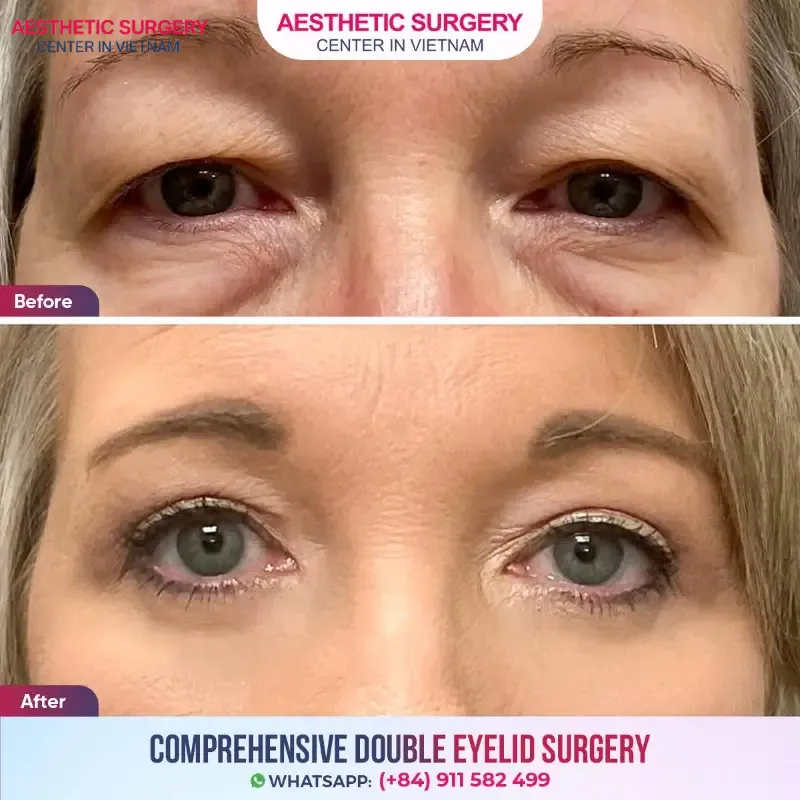
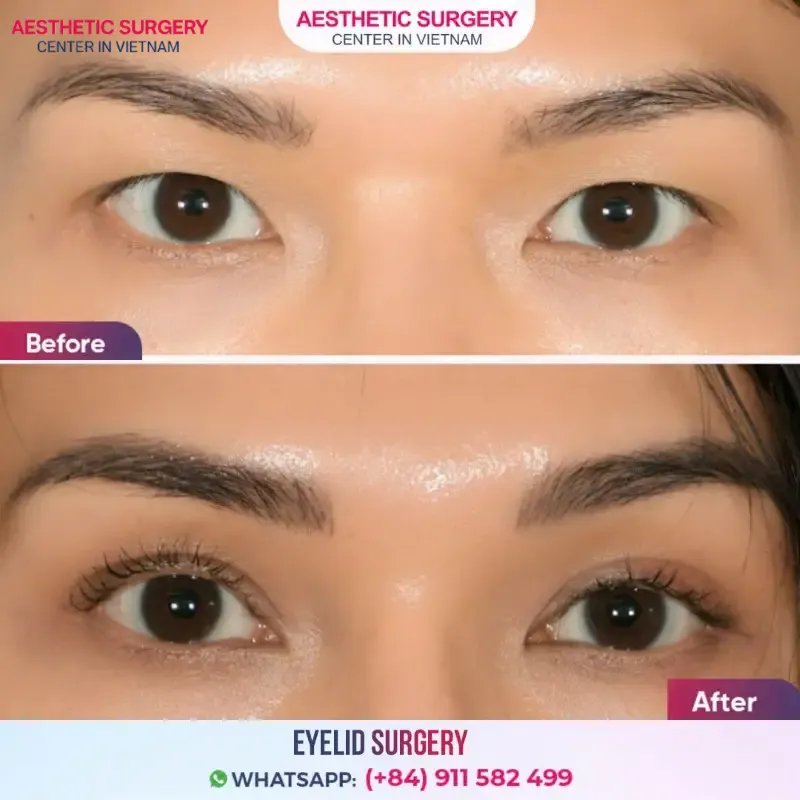
What is blepharoplasty? (eyelid surgery)? All related information and reasons why you should consider this procedure have been revealed in this article. In general, blepharoplasty is known as a procedure that removes excess sagging skin from the eyelids, thereby improving vision and enhancing facial aesthetics. For clients interested in blepharoplasty at Aesthetic Surgery Center, please contact our hotline at 0911 582 499 for a detailed consultation.







Comment on the post